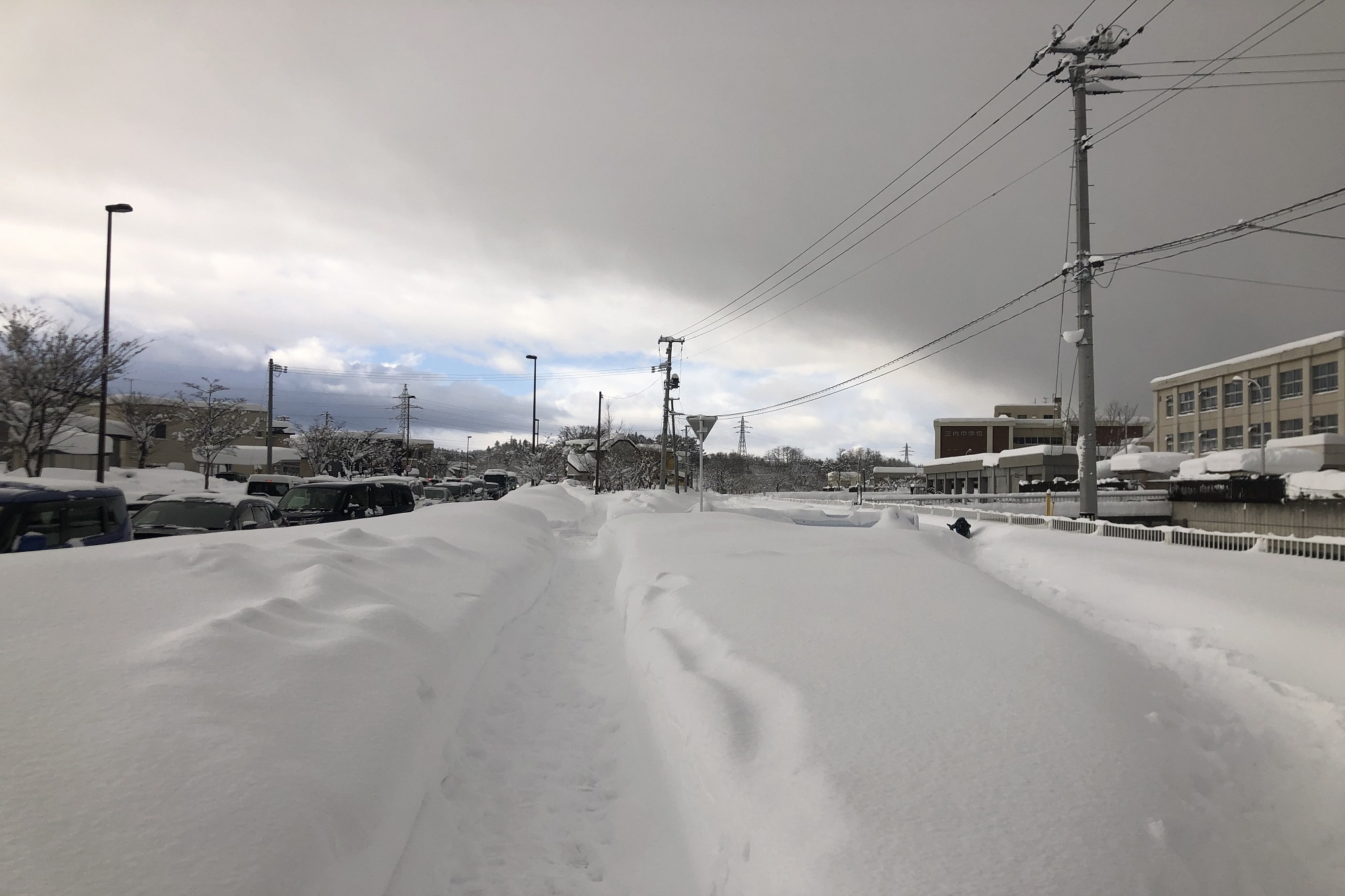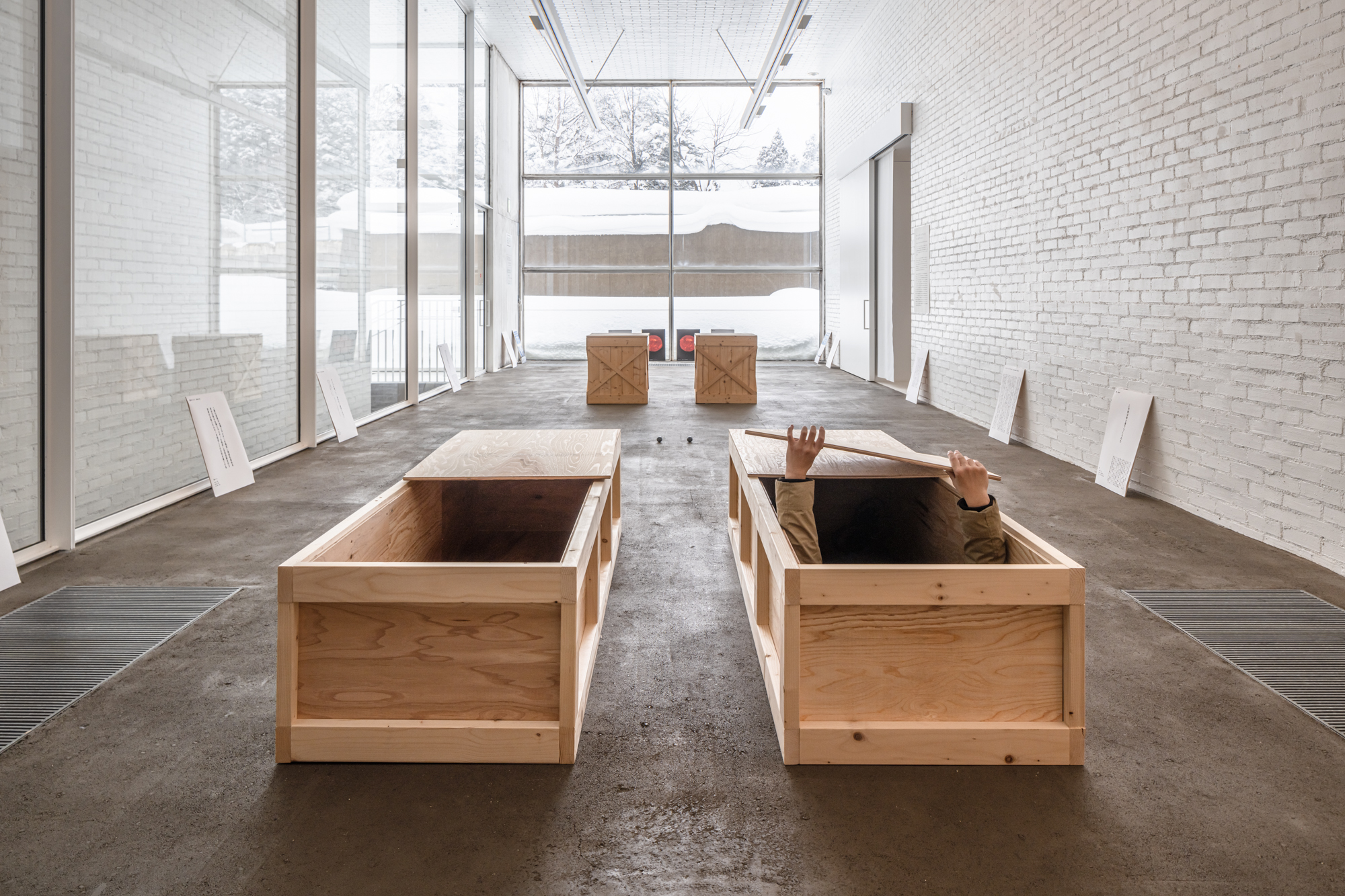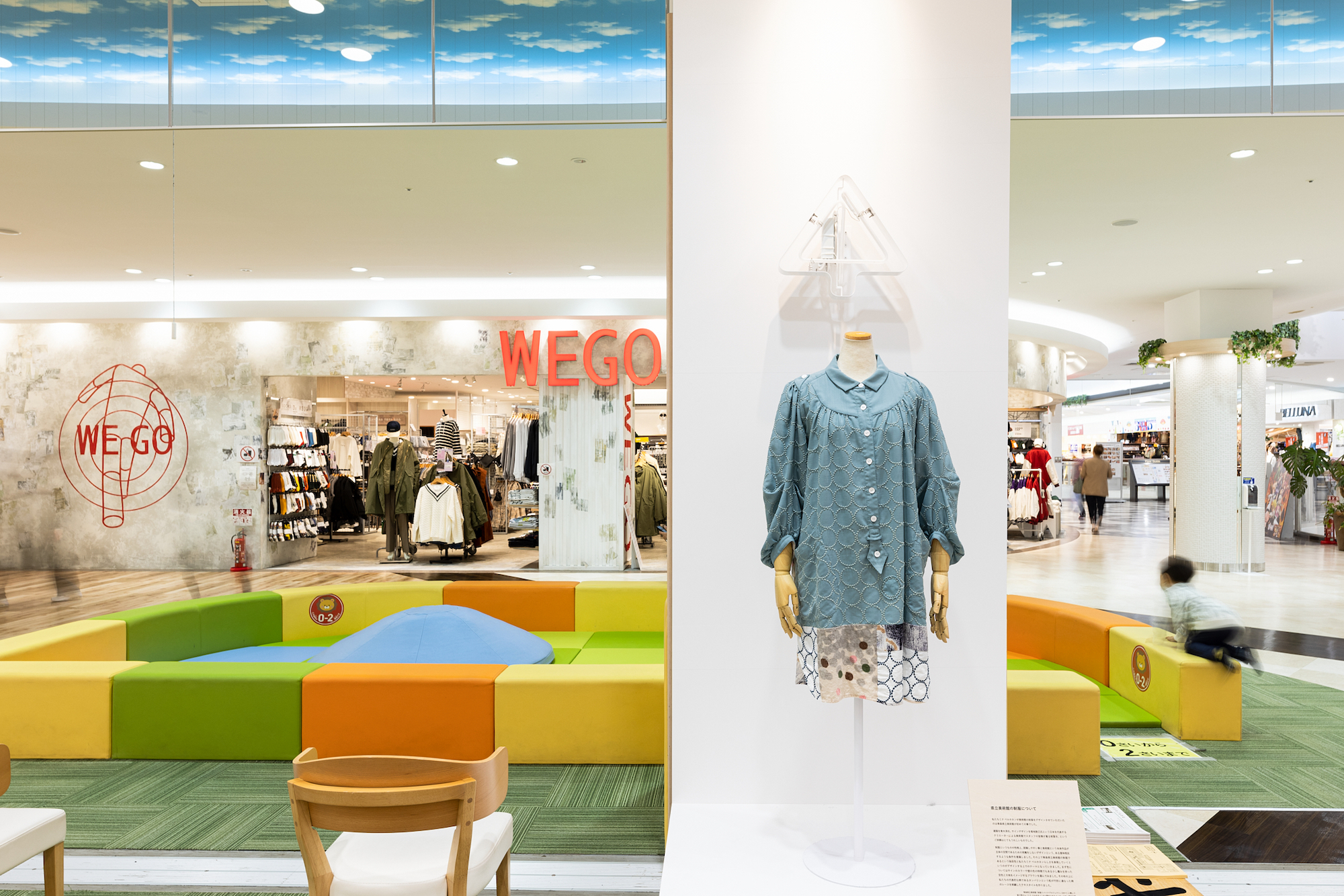1. Falling Snow
2. Halogen Lights
There was a lot of snow again this year! The amount of snow in Aomori City (famous as the world’s snowiest city) in 2022 was more than three times the usual amount and recorded 1.5 times more as compared to last year, according to a friend of mine.
The endless snow shovelling every day is tough, and the sunlight reflecting off the snow hurts your eyes. It takes a toll on both the mind and the body... I’ve lived in Aomori for nearly nine years, but I still haven’t gotten used to all this snow. I truly have so much respect for the locals. How does everyone deal with it so well? Masao Nakai, an aesthetician and social activist that I respect, was arrested during the war for being involved in left-wing activities. It is said that while in the interrogation room, he looked at the falling snow and, comparing the natural order symbolized by the snow to the pitiful order of our man-made world, he cried. In our current reality, where there is no room for the right and left to fight, I can’t afford to engage in such naïve sensibilities. However, I am determined to establish my own way of facing the snow. By doing so, my mind will be at peace.
Firstly, in this column, I would like to focus on the common element of the colour white shared by both snow and the Prefectural Art Museum. Currently, five public museums and art centres in the prefecture are collaborating to launch a program similar to an arts festival. I want to highlight that this is the result of experiences relating to the colour white. Through this, I hope to seize the opportunity to rediscover the value of local art, with the central theme featuring snow as something inevitable, and something we cannot escape from. Despite how the above may sound, I want to clarify – I do genuinely like Aomori.

‘Behind the movement of this looming dark and white object, there is a deep order inherent in its existence.’ (From Snow by Nakai Masao, 1952)
I particularly like the use of an open field as inspiration by Jun Aoki when he designed the Prefectural Art Museum. He says it is a space where being used brings it to life. You can interpret this in many ways, but as someone who uses the museum for exhibitions, I have the impression that by using the space, the charms and value of the space are discovered and increase. I’m happy to see that exhibition activities seem to be one of the factors that increase the building’s appeal. The appeal of this architectural space lies in the way the white structures are arranged like uneven teeth, whimsically, maintaining space between them within the earthen space that resembles an excavation trench. This porous and dynamic space allows for the coexistence of genre-less works, while also expanding to incorporate experimental elements. Natural light pours in from the large glass windows in the basement floor’s Exhibition Room O, helping visitors momentarily forget they are inside a building. The works maintain their uniqueness while opening to the real world, supported by a space where the inside and outside become one. On the ‘edge’ between the real world and the museum, the architecture exudes a fragile yet intense presence. Under the heat of halogen lights, as I roam through the exhibition rooms, I eventually begin to feel as though I am alone amid the falling snow, unsure of where I am, as if I’m wandering aimlessly through the world. The museum and the snow are connected through the colour white.
White flattens the experience of the viewer within a specific space. The viewer is separated from the usual spatiotemporal realm, and the overwhelming white makes it possible to connect to a new place. What is this ‘new place’? Directly, it refers to the other four museums in Aomori Prefecture, (the Aomori Museum of Art, the Towada Art Centre, the Hachinohe Art Museum, and the Hirosaki Museum of Contemporary Art). Beyond that, there exists a world where everything in it can become a museum and its exhibits. The Prefectural Art Museum can be both the start and end points of that world. I am working on the art project ‘Museum Composting Project’, applying the Museum’s nature to transform reality into something alternative.

This is the exhibition of the An Art User Conference project ‘General Museum Grave’ displayed in Exhibition Room O. Their project, General Museum, started from an interest in Marcel Duchamp’s readymades, and treats the entire real world and all things in it a museum and its exhibits. They researched the local legend in Shingo Village, Aomori Prefecture, which claims that the one crucified on Golgotha Hill was Jesus’ brother, Ishikiri, and that Jesus himself escaped to Japan, where he died in Aomori. As part of their project, they created a temporary space within the museum titled General Museum|Grave, where one can physically experience the nature of the replicated soul. This is one of the exhibits featured in the Prefectural Art Museum’s project Museum Composting Plan 2022, which was held at the museum until April 16, 2023.
Photo: Oyamada Kuniya

This is an image of Travelling Kenbi, an exhibition forming part of the Museum Composting Plan 2021. It was displayed at the ELM shopping mall in Goshogawara City, Aomori Prefecture to advertise the Aomori Prefectural Museum. The museum uniforms created by Mina Perhonen and the neon signage designed by Atsuki Kikuchi alight to some extent with the context of ELM, while at the same time diverging from this context through their artistic qualities. This in turn provides an alternative experience of the Prefectural Art Museum as a place that operates within society, like ELM’s goal of becoming a ‘lifestyle centre’.
Photo: Oyamada Kuniya
Here I am reminded once again of the abundance of art facilities in Aomori Prefecture. I’m not sure if there has been research done on the optimal number of art facilities per capita, but I would like to share my thoughts on the matter. Places such as museums and art centres that display art are nothing other than spaces for political presentations involving a variety of subjects, such as organisers, creators, and viewers, mediated through gaze. When considering Aomori, a place where multiple ‘dynamics of gaze’ intertwine, the discussions found in Art Power by art critic Boris Groys (translated by Keiko Ishida et al., Gendai Kikaku-shitsu, 2017) serve as a helpful reference. For example, Groys seeks to reframe the value of art linked to political propaganda or social activism, or in other words, art that aims to be alive and functional within society. However, there is a strangely ambivalent force at play in this type of art. The more art attempts to function, the more it blends into society, and as a result, it loses its presence as art. At the same time, this very process allows it to display a sense of presence that is, in contrast, almost arrogantly overwhelming. I don’t think art supported by social movements will be exhibited within the framework of the five-museum collaboration, but one of the conditions for the establishment of art in contemporary society is its support by such ephemeral (i.e. transient) forms. Oh, could this perhaps be connected to the nature of snow? In Aomori where there’s snow in abundance (there’s even discussion of using snow for power generation), the rise of contemporary art was an inevitable trend. As a result of the space being flooded with white and transformed into a field, the Prefectural Museum has provided the groundwork for accepting and actualizing contemporary art that seeks to be alive and functional within society, long before art festivals and installations became a global trend. Facing and struggling with the snow really leads to thinking about art. The days I spent covered in snow were not in vain. I’m so grateful for that.
But what kind of collaboration will the five museums produce? Ideally, I hope that the unique qualities of each facility will be enhanced through their collaboration. The sense of unity created through their cooperation is already sufficiently guaranteed within Aomori’s snowy nature and the ‘open field-ness’ of the Prefectural Museum. I think that simply collaborating is not enough. It must also involve questioning each gallery’s uniqueness at that point of connection. What each gallery should consider is what they can discover within the existing snow and the whiteness of their respective lighting. By doing so, Aomori, the place where one must endlessly face the snow, and the place where the possibility of art spreading and once again functioning within reality is higher than anywhere else, emerge more strongly as things of great value. Lately, I can’t shake the feeling that this is the case.
OKUWAKI Takahiro
Curator at the Aomori Museum of Art. Originally from Saitama City, he worked as an Art Coordinator at the Kyoto Arts Center before joining the museum in 2014. Okuwaki is passionate about creating spaces where form and life support one another, drawing from his experience in museum activities and curation practices. At the Aomori Museum of Art, he has led various projects, including the Aomori EARTH exhibition series. Currently, he is working on Museum Composting Project.